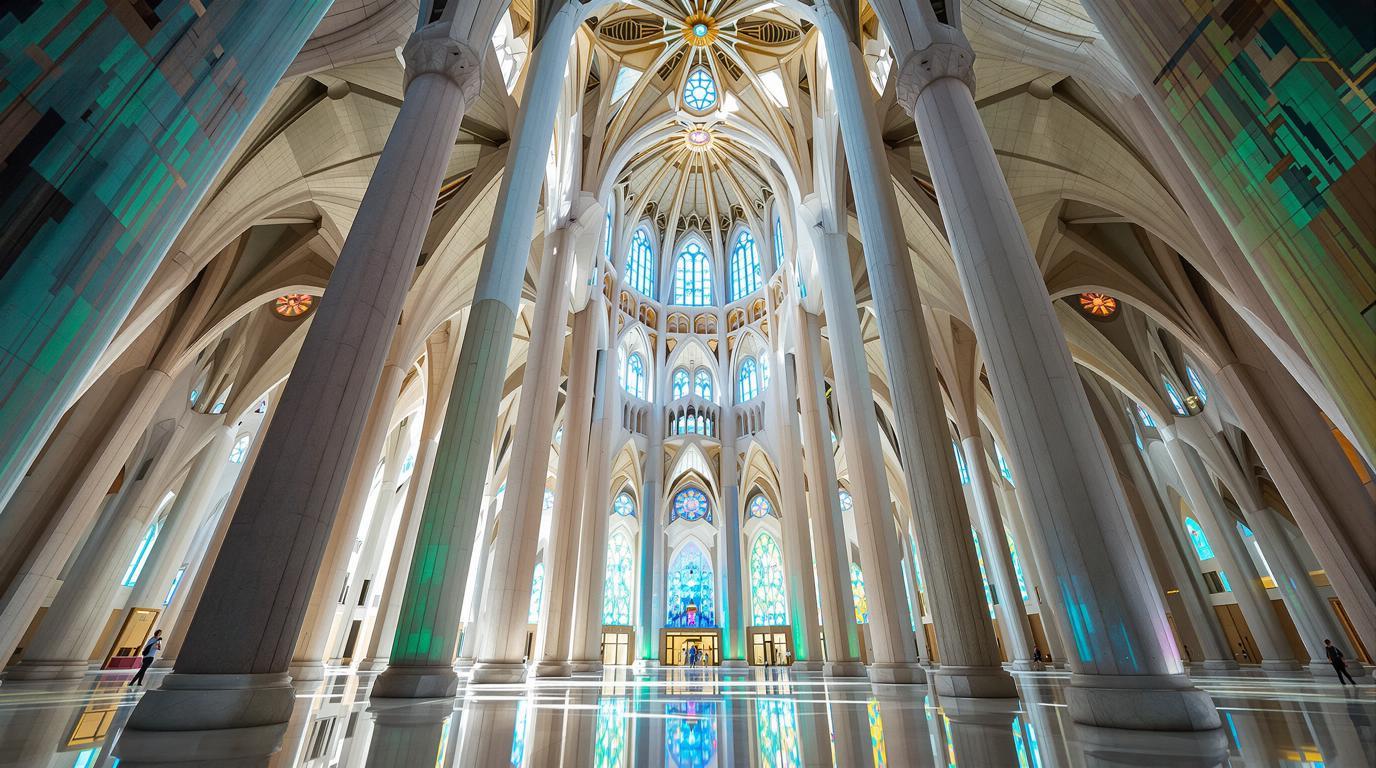Gazing at Barcelona’s Sagrada Familia feels like witnessing architecture in motion – stone that somehow flows like liquid, frozen mid-transformation. This isn’t just Spain’s most visited monument (with nearly 5 million annual visitors); it’s Antoni Gaudí’s unfinished symphony, a 140-year construction project scheduled for completion in 2026 that continues to mesmerize the world.
The world’s longest construction project
When construction began in 1882, few could have imagined that Sagrada Familia would still be under construction today. Antoni Gaudí took over the project in 1883, dedicating the remaining 43 years of his life to it. When asked about the lengthy timeline, he famously quipped, “My client is not in a hurry.” That client? God himself.
Nature’s cathedral: A forest of stone
Step inside and you’ll understand why Sagrada Familia is unlike any cathedral on earth. Massive columns branch upward like trees, creating a stone forest beneath a canopy of geometric stars. Gaudí, who once said “nothing is invented, for it’s written in nature first,” designed the columns to mirror natural forms, with no straight lines in sight.
“The Sagrada Familia is made by the people and is mirrored in them. It is a work that is in the hands of God and the will of the people.” – Antoni Gaudí
A light show 140 years in the making
The stained glass windows transform sunlight into rivers of color that shift throughout the day. Morning brings cool blues and greens from the east; afternoon delivers fiery reds and oranges from the west. This calculated light choreography isn’t accidental – Gaudí meticulously planned this sensory experience, creating an atmosphere as magical as any hidden European gem.
Three facades, three chapters of Christ’s life
The basilica features three dramatically different facades. The ornate Nativity Facade (east) celebrates Christ’s birth with joyful, nature-inspired sculptures. The stark Passion Facade (west) depicts Christ’s suffering with harsh, angular forms carved by Josep Maria Subirachs. The Glory Facade (south) remains under construction and will eventually be the main entrance.
The architect buried beneath his masterpiece
Gaudí’s tomb lies in the crypt below, a powerful reminder of his devotion. After his tragic death in 1926 (struck by a streetcar), thousands lined Barcelona’s streets for his funeral. Today, his beatification process continues, potentially making him the first architect saint.
“There are no straight lines or sharp corners in nature. Therefore, buildings must have no straight lines or sharp corners.” – Antoni Gaudí
Skip-the-line is non-negotiable
With millions of annual visitors, pre-booking tickets is essential. The basic entry costs €26, while guided tours with tower access run about €40. For the most magical experience, visit early morning when light streams through the eastern windows, creating a spectacle reminiscent of Turkey’s gleaming white terraces.
The mathematical genius behind the madness
Far from random, Sagrada Familia follows precise mathematical principles. Hyperboloids, paraboloids, and helicoids create the organic forms that seem impossible for stone. This mathematical foundation allows the massive structure to stand with remarkable efficiency, similar to how Renaissance masterpieces hide unexpected mathematical precision.
Tower climbing: Not for the faint-hearted
The spiral staircases inside the towers offer breathtaking views and vertigo-inducing drops. Currently, visitors can ascend either the Nativity or Passion towers, with the tallest – the Jesus Christ tower – set to reach 566 feet upon completion, making Sagrada Familia the tallest church in the world.
Standing beneath Sagrada Familia’s soaring vaults, you don’t just observe architecture – you experience a spiritual journey through stone. As sunlight transforms into kaleidoscopic color across the nave, even skeptics find themselves silent, contemplating the magnificent obsession that has driven generations to complete Gaudí’s impossible dream. Perhaps that’s the true miracle of Sagrada Familia: not just what it is, but what it does to those who enter.
